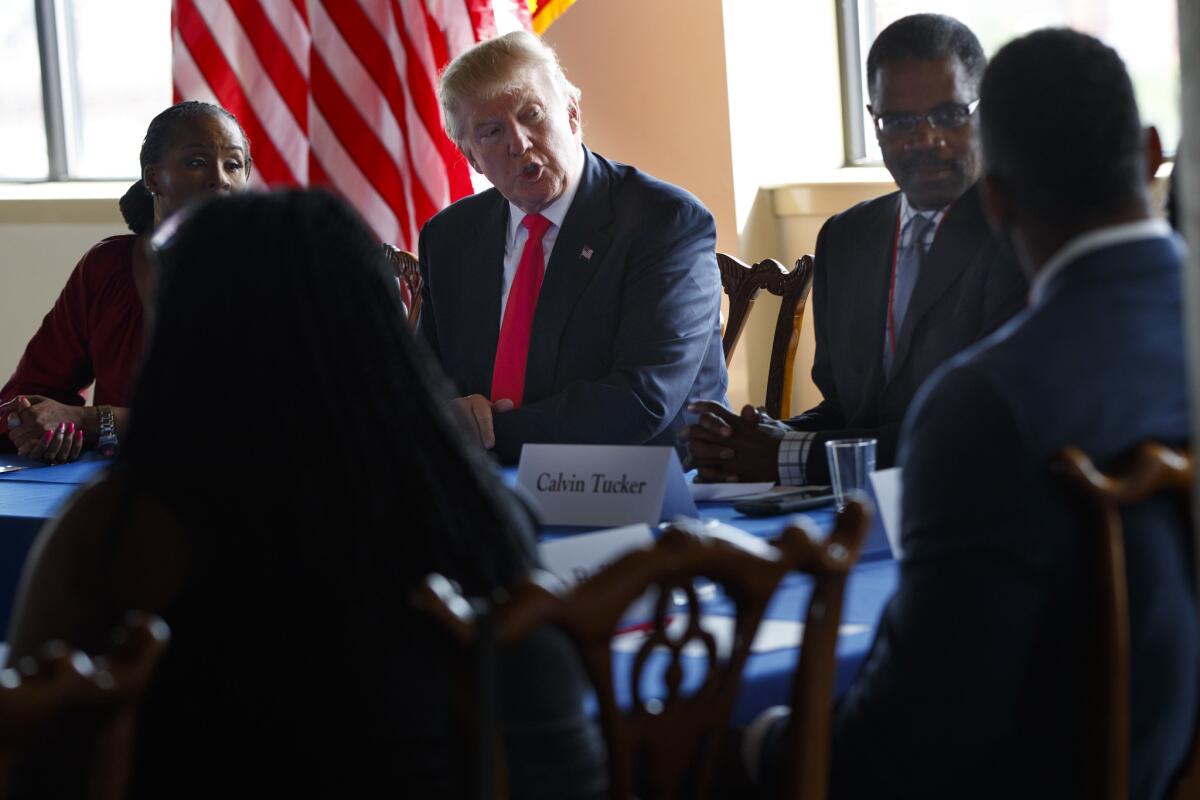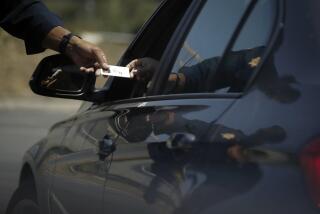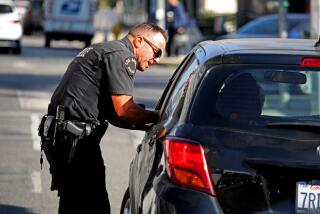Stop-and-frisk’s effect on crime is hotly debated. Its disproportionate impact on minorities is not

Donald Trump on Monday touted stop-and-frisk as a way to combat urban crime, but the controversial policing tactic was ruled unconstitutional by a federal judge and has divided experts on its effectiveness.
“We have to take the guns away from these people that have them and are bad people that shouldn’t have them,” Trump said, saying he did not agree with moderator Lester Holt’s assertion that some people view it as a form of racial profiling.
Under stop-and-frisk, officers stop, question and search people for contraband. The approach has been used in major cities such as New York City and Baltimore, but in many cases the practice has ended or been scaled back over concerns about racial profiling.
In New York City, the tactic began in the early 2000s and quickly expanded in scope. At its peak in 2011, police stopped New Yorkers more than 685,000 times, according to data from the New York Civil Liberties Union; 88% of those stops yielded no contraband. Nearly 90% of those stopped that year were black or Latino.
Crime rates declined in New York City from its peak in the 1990s, but criminologists attribute that to a nationwide plunge in crime over two decades, not specifically to stop-and-frisk.
A federal judge ruled in 2013 that the New York City program violated the rights of minorities. Current Mayor Bill de Blasio ended the city’s use of the tactic.
Trump has put particular emphasis on crime and how it affects black Americans. He has pointed to sharp increases in violent crime in cities such as Chicago, which he has described as “more dangerous” than Afghanistan.
There has been a recent uptick in murders, according to FBI data. In 2015, murders were up 10.8% compared with last year but remain far below the peak levels of the mid-1990s.
Violent crime overall was up 3.9%, while property crime declined by 2.6% compared with 2014.
The picture is mixed in major cities this year. According to the Major Cities Chiefs Assn., there have been certain cities that have seen jumps in homicides in 2016 compared with 2015, such as Chicago and Los Angeles, but other cities have seen a decline in homicides in the same period, such as Houston and New York City.
Trump has made an overt, if clumsy, appeal to African American voters in recent weeks, pitching himself as the best option to fix what he describes as the dismal state of black America.
“Our African American communities are absolutely in the worst shape they’ve ever been in before. Ever, ever ever,” Trump said at a campaign stop last week.
The remark immediately drew criticism from those saying Trump was glossing over the horrors of slavery and the explicit segregation of the Jim Crow era.
A look at a number of metrics paint a more nuanced picture of what African Americans face.
The unemployment rate for African Americans was 8.1% in August, according to the Bureau of Labor Statistics; that rate has been steadily declining since it peaked at 16.8% in March 2010. Still, it remains higher than the national average, which was 4.9% in August.
In stump speeches, Trump has said that nearly 6 in 10 young blacks are unemployed. The real jobless figure for African Americans ages 16 to 24 is significantly lower: around 20% as of July.
The National Urban League, in its annual State of Black America report, found some gains for black Americans in recent generations. The percentage of African Americans obtaining bachelor’s degrees climbed from 6.6% in 1976 to 22.2% in 2016. Black life expectancy 40 years ago averaged 68.3 years. It is now 75.1 years.
But there are still notable lags. The rate of black homeownership has stayed essentially flat since 1976 at around 43%.
Follow @melmason for the latest on national politics.
Donald Trump lauds stop-and-frisk policies widely condemned as racial profiling
Donald Trump calls school choice ‘new civil rights issue’ of our time
House Speaker Paul Ryan can’t say whether he’d support Trump on stop-and-frisk
More to Read
Get the L.A. Times Politics newsletter
Deeply reported insights into legislation, politics and policy from Sacramento, Washington and beyond. In your inbox three times per week.
You may occasionally receive promotional content from the Los Angeles Times.







